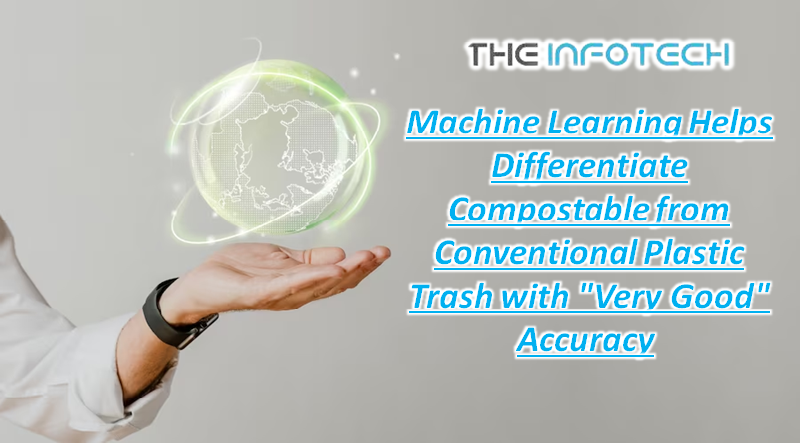Machine Learning Helps Differentiate Compostable from Conventional Plastic Trash with “Very Good” Accuracy
Compostable plastics are becoming more popular, and while they have many advantages, some of these items, such as wrappers and packaging, can mix with and contaminate recycled regular plastic trash. To solve this problem, scientists have developed machine learning algorithms that can discriminate between ordinary plastics and biodegradable plastics.
In our daily lives, disposable plastics may be found in a wide variety of products, including food containers, coffee cups, and plastic bags. Although certain polymers are intended to biodegrade under regulated circumstances, they nonetheless provide a challenge because they frequently resemble conventional plastics. These compostable polymers can contaminate plastic waste streams when they are poorly recycled, which lowers recycling efficiency. Moreover, compost becomes contaminated since recyclable plastics are frequently confused with biodegradable ones.
“The accuracy is very high and allows the technique to be feasibly used in industrial recycling and composting facilities in the future,”
Prof Mark Miodownik, corresponding author of the study.
The model attained complete accuracy for all materials when the samples measured greater than 10 mm × 10 mm, according to the results, which demonstrated excellent success rates. Nevertheless, the misinterpretation rate was 20% and 40%, respectively, for materials made from sugarcane or palm leaves measuring 10mm by 10mm or smaller.
Certain materials might be more accurately recognized when 5mm (about 0.2 in) by 5mm (about 0.2 in) samples were analyzed: 20% of LDPE and PBAT pieces were incorrectly classified, while 60% (sugarcane) and 80% (both biomass-derived materials) of them were incorrectly recognized (palm-leaf).
“Currently, most compostable plastics are treated as a contaminant in the recycling of conventional plastics, reducing their value. Trommel and density sorting are applied to screen compost and reduce the presence of other materials. However, the level of contaminants from the current screening process is unacceptably high,”
Prof Mark Miodownik, corresponding author of the study.
Only when compostable packaging is industrially decomposed and does not harm the environment, other waste streams or the soil can the benefits of compostable packaging become apparent.
Researchers from UCL’s Plastic Waste Innovation Centre, including Nutcha Teneepanichskul, Prof. Helen Hailes, and Miodownik, examined several types of conventional, compostable, and biodegradable plastics using hyperspectral imaging (HSI) to construct classification models. The HSI imaging approach generates a pixel-by-pixel chemical description of a sample by detecting the invisible chemical signature of various materials as it scans them. These descriptions were interpreted by AI models, which identified the materials. Plastic mismanagement in recycling and industrial composting processes is high, making reliable sorting mechanisms essential.
“we can and will improve it since automatic sorting is a key technology to make compostable plastics a sustainable alternative to recycling.”
Miodownik pointed out.




